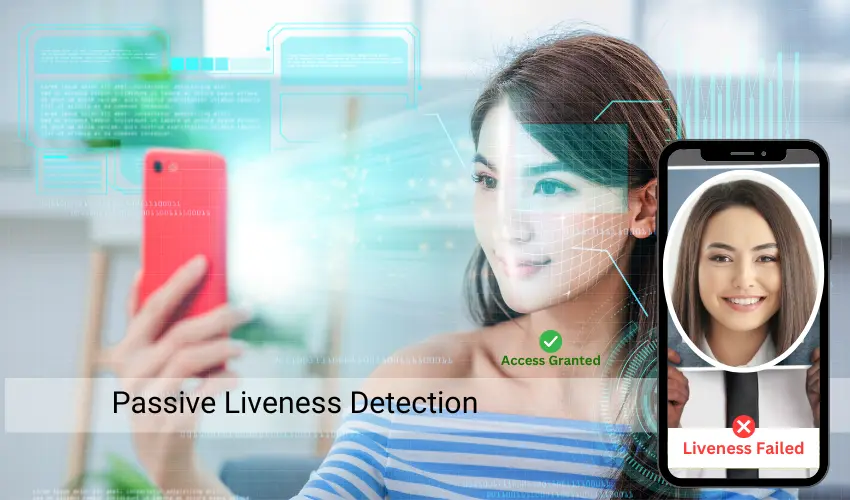
Passive liveness detection is a method used in biometrics and security systems to determine whether a biometric sample, such as a fingerprint, face, voice, eye, or palm recognition, comes from a live individual or if it is a spoofed image, video, or other artificial source.
Passive liveness detection protects against fraudulent attempts to bypass security measures by providing fake or non-living biometric samples. Biometric authentication systems must have this feature to ensure their reliability and accuracy. Applications utilizing these systems include mobile devices, access control systems, and financial transactions.
The introduction of biometric technology was a great step towards a secure and convenient future for organizations. Unfortunately, the transition slowed down during the pandemic phase, when the fear of getting a disease by touching a specialized biometric hardware device became exorbitant.
But face recognition, another biometric tech, became a savior for many businesses as it started enabling access and attendance systems and more. It also came with loopholes like manipulating access by creating deep fakes that mimicked movements, which most active liveness detection systems used. At the time, major organizations had implemented active liveness detection in their online systems, which proved detrimental to their security and created panic among account holders and organizations. But it was all resolved with passive liveness detection technology, which has become much more popular for many reasons.
Active & Passive Liveness Detection: What’s the Difference?
Do you remember making sudden gestures like mimicking a picture, raising an eyebrow, or lifting your hand? All these action-oriented methods that demand replication from the end user are used to ensure the physical presence of the end user and match the stored face or other biometric signals through active liveness detection. Organizations used apps or weblinks wherein the end user had to register or log in after undergoing this process. The method became inconvenient because if it didn’t match, the end user had to make the same reactions again, which became frustrating and drained productivity.
However, the major drawback was using spoofed video or AI-built faces to bypass security and gain access to sensitive information. Passive liveness detection is an internet-independent technology that doesn’t require making gestures and matches the biometric identifiers with the stored database to ensure real-user presence.
It is a spoof-free and user-friendly way of revoking access to unauthorized and unidentified users, even if they are wearing a mask or goggles or have any other obstacle. Artificial intelligence-powered, it instantly detects a faked voice, texture, or other traits of a person without the need to upload a video or imitate a gesture. As a result, the chances of an account being hacked or attacked with biometric passive-liveness detection technology are near zero or negligible. Banks, financial organizations, and other businesses are already using it to assure increased security.
How Does Biocube Use Passive Liveness Detection?
One of the most common attacks is face spoofing, wherein, 2D or 3D prints are used to replicate the face of a person and breach accounts. It was one of the key reasons for the introduction of liveness detection into the biometric technology field. Biocube’s face recognition system, which is gaining popularity in the US, UK, India, and other markets, comes with an in-built passive liveness monitoring system that can instantly detect faked or spoofed users.
The user data is stored on a Distributed Data Architecture (DDA) and secured with AES 256 encryption, making it unreadable and inaccessible to hackers. It makes marking attendance and accessing digital accounts simpler.
As it is, biometric technology is hard to replicate, and cybercriminals spend hours cracking the code. The added advantage of the protection protocols makes it highly impenetrable. The biggest advantage of the system is that the face recognition solution is multimodal, meaning it can be used via a regular smartphone, tablet, or desktop camera. As a result, organizations can safeguard their capital expenditures and implement a face recognition solution with multiple advantages, including liveness detection.
Conclusion
Organizations should adapt to the new-age advancements in biometric technology. It will improve their workplace experience by eliminating spoofing or tampering. Simultaneously, it will make the end user’s access more convenient.
The inclusion of a passive facial liveness system will surely help in achieving these goals. Moreover, it will enhance business productivity by reducing the need for gestures by the end user.
The government and private organizations could also achieve the goal of complying with the government’s security requirements. Such a face recognition system is best suited for hotel, BFSI, travel, and public sector industries.